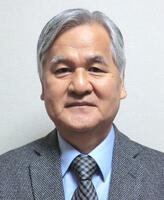Research Experience
-
2025.04-Now
Waseda University Professor Emeritus
-
1996.04-2025.03
Waseda Univerisity, Professor
-
1991-1996
Waseda University, Assistant Professor
-
1990-1991
Waseda University, Associate
-
1986-1990
Waseda University, Research Assistant
-
1988.03-1988.06
高麗大学 理学部地質学科 交換研究員

